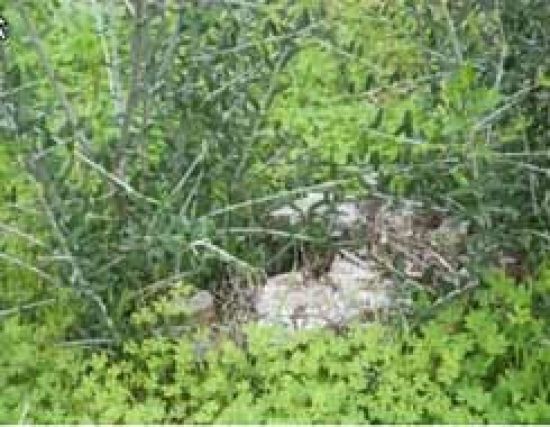Original Agriculture Victoria Note Number: AG1377
Published: March 2009. Reviewed May 2013
Although a fire affected olive grove can look devastated, trees could have the potential to recover and be productive again if managed well. Tree recovery depends on the degree of heat damage, tree size and age, moisture stress before and after the event and the presence of undamaged trunks and scaffold branches above any graft unions. If cuttings were planted, all re-growth can be used to re-train a new tree.
Recovery of olives after fire is likely to involve pruning, replace or repair of the irrigation system, some nutrition management and patience whilst the trees re-shoot and indicate the percentage of recovery. Assessment is then required of the blocks viability depending on how many trees have survived.
Death
Complete death of olive trees from wildfire is more likely to occur in younger plantations that have a majority of trees with a stem diameter of less than 20 millimetres.
A 2005 study conducted in the Western Sydney foothills of a low intensity fire and its affect on a subspecies of Olea europaea , showed that a low intensity fire did not kill larger olive trees with trunks and branches larger than 20mm (von Richter et al. 2005). However 80% of younger trees with stems less than 20 mm in diameter died.
It was also found that lower rainfall leading up to the fire event may have increased the death toll by reducing the ability of small plants to re-sprout due to water stress.
Assessment and recovery

Image 1: Rapid regrowth from an olive stump. (www.fieldriver.org/gallery.php)
Do not prune damaged trees until regrowth has been begun. If trees are grafted, ensure that the regrowth forming the new tree is occurring above the graft union.
Trees planted as cuttings can be retrained even if shoots emerge from ground level or below the soil surface.
Olives can begin re-sprouting within just a couple of weeks according to a study undertaken on feral Olea europaea in the Mt Lofty ranges of South Australia (Sheldon and Sinclair 2000).
Irrigation will assist the speed at which full production can be achieved although volumes applied may need to be less. The study by Sheldon and Sinclair (2000) also demonstrated that during the recovery period, trees undergoing simulated post fire regrowth had lower moisture stress and higher soil moisture availability than intact trees with full canopies. Recovering trees only need half as much water due to the presence of a smaller leaf area per root zone volume.
Fertiliser will be less important than irrigation. Olive trees do not require large amounts of fertiliser according to Paul Vossen of the University of California Davis. Due to the small leaf area of the recovering trees in relation to large root mass, regrowth should be rapid and vigorous and extra applications of nutrients may make the task of reshaping the trees more tedious.
It could also delay the return to fruiting because of excessive vigour.
Pruning
In many cases the process of pruning and reshaping trees will be similar to the set up phase of the grove. Occasionally, unless the trees were killed outright, the regrowth will occur on what was the cooler side of the tree during the fire.
Careful attention should be paid to the selection and placement of new structural limbs to prevent possible limb breakage when cropping resumes.
Long term viability
Decisions about long term grove viability, possible tree replacement and pruning strategies should be made in consultation with technical specialists and your insurance company.
Decisions should take into account the severity of the damage and losses, tree age, variety, rootstock and planting densities. Younger trees, if not killed outright, may be easier to re-shape into productive trees than older trees.
Key messages for fire affected olive growers
- Assess groves as soon as possible, based on the extent of damage but wait for signs of regrowth before pruning.
- If trees are grafted, make sure you are regrowing material from above the graft, not shoots from the rootstock. Shoots from rootstocks will need to be re-grafted.
- If grown from cuttings, any re-growth can be trained into a new tree as this remains the same as the cultivar originally planted.
- If the grove is assessed as viable,, repair or replace the irrigation system and irrigate as soon as possible - remembering that water use may be lower if the canopy is substantially smaller.
- Do not fertilize until there is sufficient growth to utilise it. Do not over-fertilise as re-growth is usually vigorous.
Further references
Lotte von Richter, Debra Little and Doug Benson (2005) Effects of low intensity fire on the resprouting of the weed African Olive (Olea europaea subsp. cuspidata) in Cumberland Plain Woodland, Western Sydney. Ecological Management & Restoration Vol 6 No 3 Dec 2005
Megan Sheldon and Russell Sinclair (2000) Water Relations of Feral Olive Trees (Olea europaea) resprouting after severe pruning. Australian Journal of Botany.,2000, 48, 639-644
Paul Vossen, Co-operative Extension Provider (2004) Fertilizing Olive Trees. UCDavis. http://ucce.ucdavis.edu/files/filelibrary/2161/17332.pdf
Riccardo Gucci and Claudio Cantini, (2000) Pruning and Training Systems for Modern Olive Growing. Collingwood, Vic : CSIRO Publishing, 2000
Acknowledgements
This Agnote was developed by Farm Services Victoria, March 2009
ISSN 1329-8062
Published and Authorised by:
Department of Environment and Primary Industries
1 Spring Street
Melbourne, Victoria
This publication is copyright. No part may be reproduced by any process except in accordance with the provisions of the Copyright Act 1968.